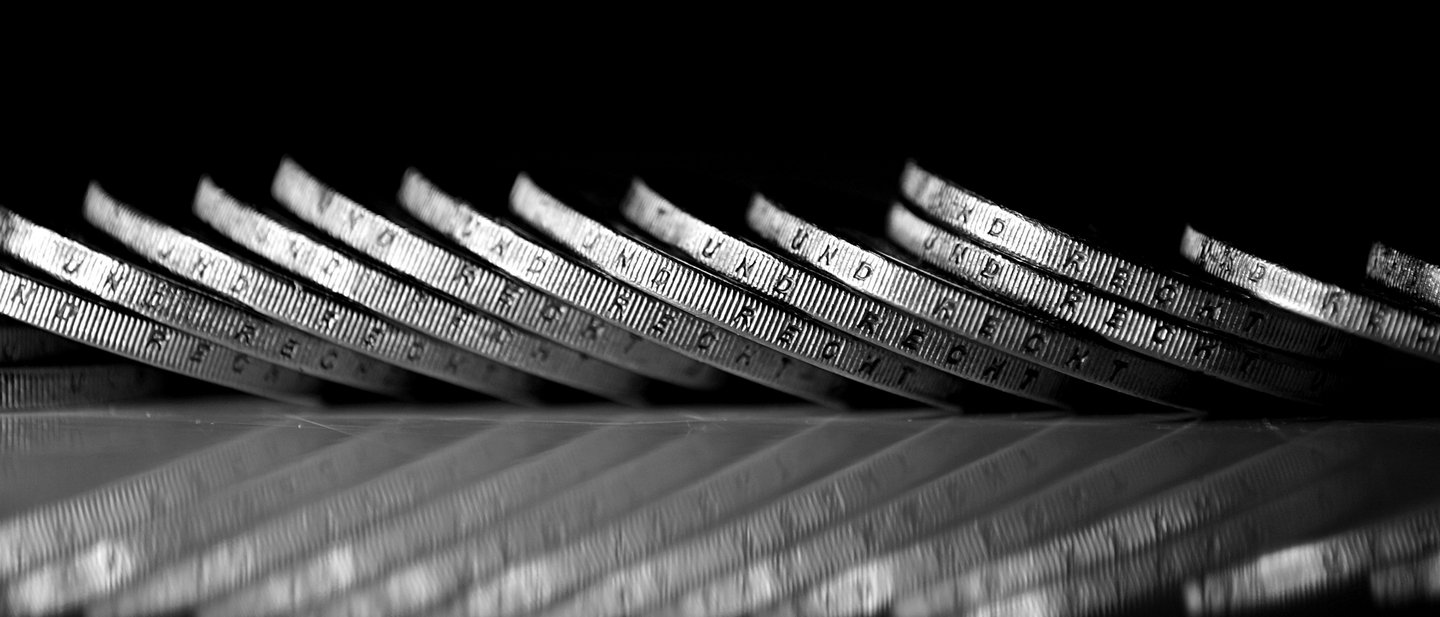For further interesting facts about cash and currencies
make sure to also look at our collections of facts about the euro and facts about banknotes.

Coins are more than just legal tender. They can be literally worth their weight in gold. We examine the other side of the coin.
Tossing a coin to determine between two possible outcomes started in the time of Emperor Julius Caesar. Romans called this game of chance navia aut caput (“ship or head”), referring to the image of a ship’s prow on one side of the coin and the emperor’s head on the other.
In ancient Rome, the emperor’s word was law, so if a coin landed heads up, you had to respect the will of the emperor and carry out the action decided for that side. In Britain, the practice was called cross and pile, taking its name from the indentation from the hammer used to press the metal as the coin was struck.
Are we too cautious for own good when facing life-changing choices? This was certainly the conclusion of one study by Steven D. Levitt, Department of Economics, University of Chicago.
Levitt conducted a field experiment where research subjects who were struggling to make a decision flipped a coin to help determine their choice. Those who were told by the coin toss to make a change reported that they were substantially happier several months later.
Euro coins first came into use in 2002. As of January 2020, there were 135 billion euro coins in circulation. Worldwide there are about 1 trillion coins in circulation.
Coin minting in the European Union generates more than €13 billion of production, according to the Institute for Industrial Research study, “Mints in Europe EU28 from an Economist’s View” (2019) – 16,858 people’s jobs are directly or indirectly linked to coin production.
Sailors are a superstitious lot, and favor traditions and ceremonies that bring good luck when building a new ship. One of these is the coin ceremony, whereby mariners place one or two coins under the keel block of the new ship to bring good luck. The tradition dates back to Roman times, when coins attached to ships were said to provide divine protection.
Money can be worth far more than its printed value. Take the 1794 Flowing Hair Silver Dollar, for instance, which costs $10 million, making it the world’s most expensive coin.
This is said to be the first silver coin to have been minted and issued by the US Federal Government in 1794. And worth a lot more than your average one dollar coin.
How can 2,000 coins be worth the same as one cent? That’s the case, however, with Uzbekistan’s tiyin coin – the coin worth less than any other worldwide. The tiyin is still legal tender but rarely found in circulation.
As the legend goes, if you toss one coin into the Trevi Fountain in Rome, you’ll return to the Eternal City. If you toss in two coins, you’ll return and find love. Three coins means you’ll return, fall in love, and get married.
The coin toss became a ritual after the 1954 romantic comedy film, “Three Coins in the Fountain.” Around €1.5 million in coins is collected each year from the fountain and donated to Caritas Roma, a charity for the poor and homeless.
It’s not just men whose faces are depicted on coins: throughout history women have also adorned our cash. Take Marianne, the national symbol of the Republic of France, whose famous face first appeared on 5 centimes coins, then the franc, and then the euro.
Cleopatra was the first female to appear alone on Egyptian coins while Queen Isabella I of Spain became the first foreign ruler to appear on a coin issued by the US. Meanwhile, Catherine the Great of Russia issued the largest copper coin ever used in circulation, namely the 5 kopeks coin, which weighed on average a hefty 51 grams.
Filipino children know how to have fun on New Year’s Eve. They fill up their pockets with coins, and when the clock strikes midnight they shake out their pockets to bring good luck and attract wealth. Scattering coins around the house, on tabletops and in drawers is also said to bring luck and money.
make sure to also look at our collections of facts about the euro and facts about banknotes.
Published: 17/05/2020
Don’t miss out on the latest articles in G+D SPOTLIGHT: by subscribing to our newsletter, you’ll be kept up to date on latest trends, ideas, and technical innovations – straight to your inbox every month.